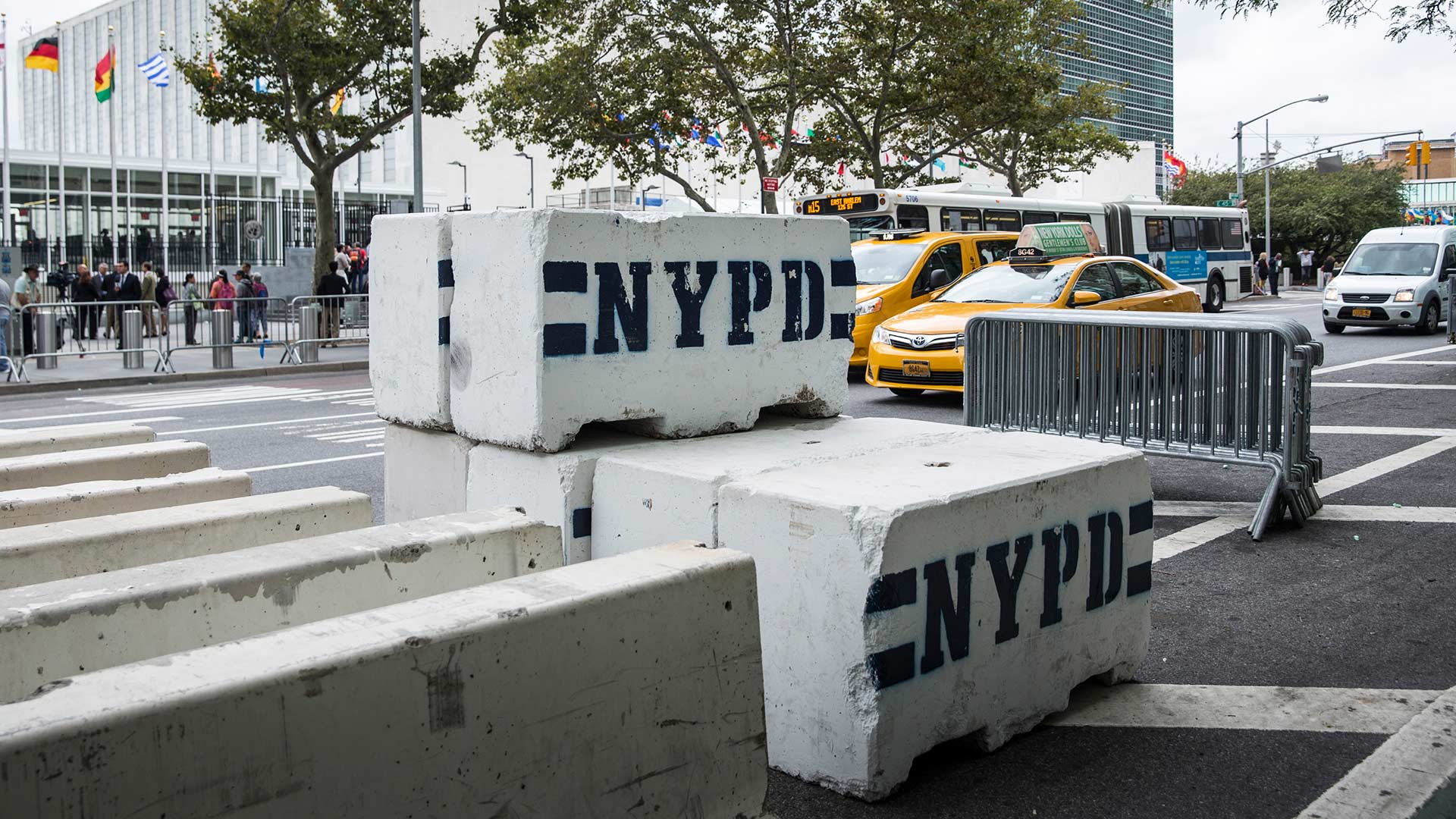

Recently, we’ve seen an increase in terrorist activity using vehicles as the primary weapon. This raises the question: How can you stop these deadly weapons? There are plenty of options used by by law enforcement to protect events, soft targets and government buildings, and The Drive is going to briefly go over a few of them.
Unfortunately, cost issues prevent deployment of these car-stopping devices in some important places, but there are interim solutions that can structure our pedestrian walkways using an affordable patchwork of these devices.
Permanent Spike Strips
Triggered electronically or designed to only retracted when pushed in a single direction, permanent spike strips are a fantastic tool when space is on your side. A car or truck will be able to clear a spike strip but the rapid deflation of their tire will prevent further travel beyond whatever momentum they are currently carrying. Such devices are usually used for restricted parking lots and other less-critical areas.
Permanent Bollards
Permanent Bollards are one of the more common devices used to stop cars. You can see them around crosswalks, corners, in front of stores and most other areas with heavy pedestrian traffic. Bollards range in diameter and the thicker ones can even stop a fully loaded truck. Their effectiveness was demonstrated when they brought the maroon Honda Accord to a stop in the recent Time Square tragedy. Permanent Bollards are relatively cost effective and do not require any maintenance or manned operation.

Jersey Barriers
The average Jersey Barrier is approximately 10 feet long and 4,000 pounds, perfect for keeping cars in their appropriate lane or out of restricted areas. When secured to other jersey barriers, it is difficult to get past a Jersey Barrier, even in a truck. Unfortunately, Jersey Barriers also restrict pedestrian traffic, making them an inconvenience for many.

Retractable Wedge Barriers
Possibly the most effective car-stopping device, the wedge barrier can take 18,000 truck and bring it to zero miles per hour in an inch. These barriers are usually manned by a guard to ensure proper credentials are given before retracting the barrier but they can also operate remotely. Due to the size and angle of the wedge, these barriers normally do not retract for pressure in the appropriate direction of travel, rather than are powered hydraulically both up and down. These barriers are extremely effective but are too costly to install everywhere, hence why they are limited to just driveways.

NYPD Portable Cement Barriers
Seen outside volatile locations and areas of heavy pedestrian traffic throughout the five boroughs. Installed by forklift, these barriers are cement squares that are strategically placed to allow pedestrian traffic while restricting vehicle traffic. Due to the general size of a Jersey Barrier, these cement squares are a more city-friendly alternative. They are also low in cost and easy to maintain (the occasional paint job).

DSNY Dump Trucks
Used by cities and towns throughout the country but really perfected by New York Department of Sanitation, sand-filled dump trucks have been adapted to act as movable barriers. Most notably seen around parades, large fairs and political buildings, dump trucks filled with sand are used to quickly set up blockades without permanently restricting access.

Options to Halt A Moving Vehicle
Sometimes law enforcement personnel need to halt a moving vehicle before it reaches a certain location or hurts someone while in motion. In order to do so, many departments utilize devices like push-bars or portable spike strips. The push-bar is common device mounted on the front of a cruiser and used to conduct a Pursuit Intervention Technique (PIT) on fleeing vehicles. The other device can be found in the back of the cruiser and its called a portable spike strip. The device is easily deployed across a roadway by an officer and can be easily retracted to get out of the way for pursuing vehicles. The portable spike strip slowly deflates the tires of a fleeing vehicle, eventually bringing the vehicle to a stop. Neither of these devices can assist in the types of vehicular attacks we have seen over the last few weeks but that are important tools in a department’s list of equipment.


It is important to note that even though there are many different types of car-stopping devices, none of them beat the situational awareness of a pedestrian. Always know your surrounds and never take a traffic pattern for granted.